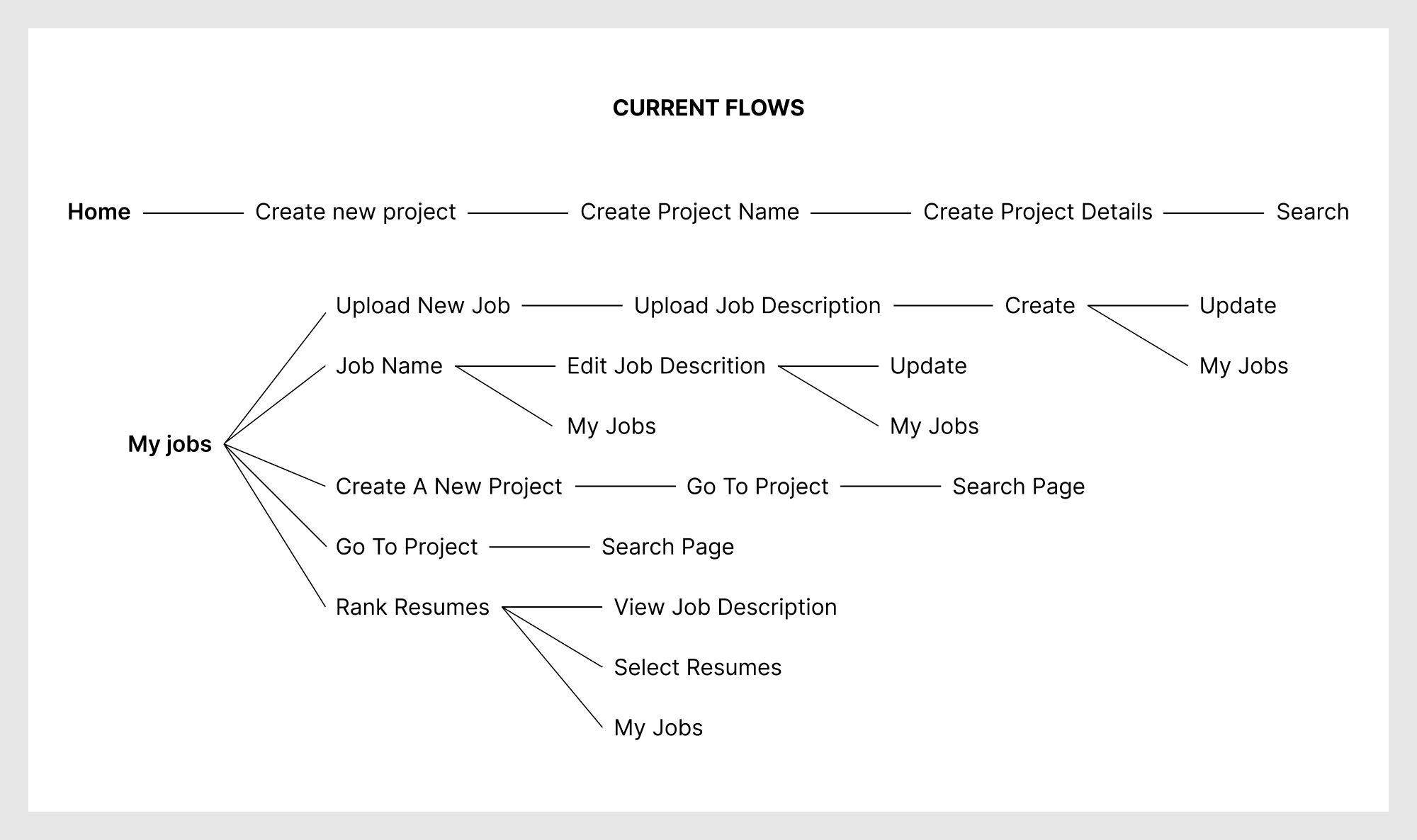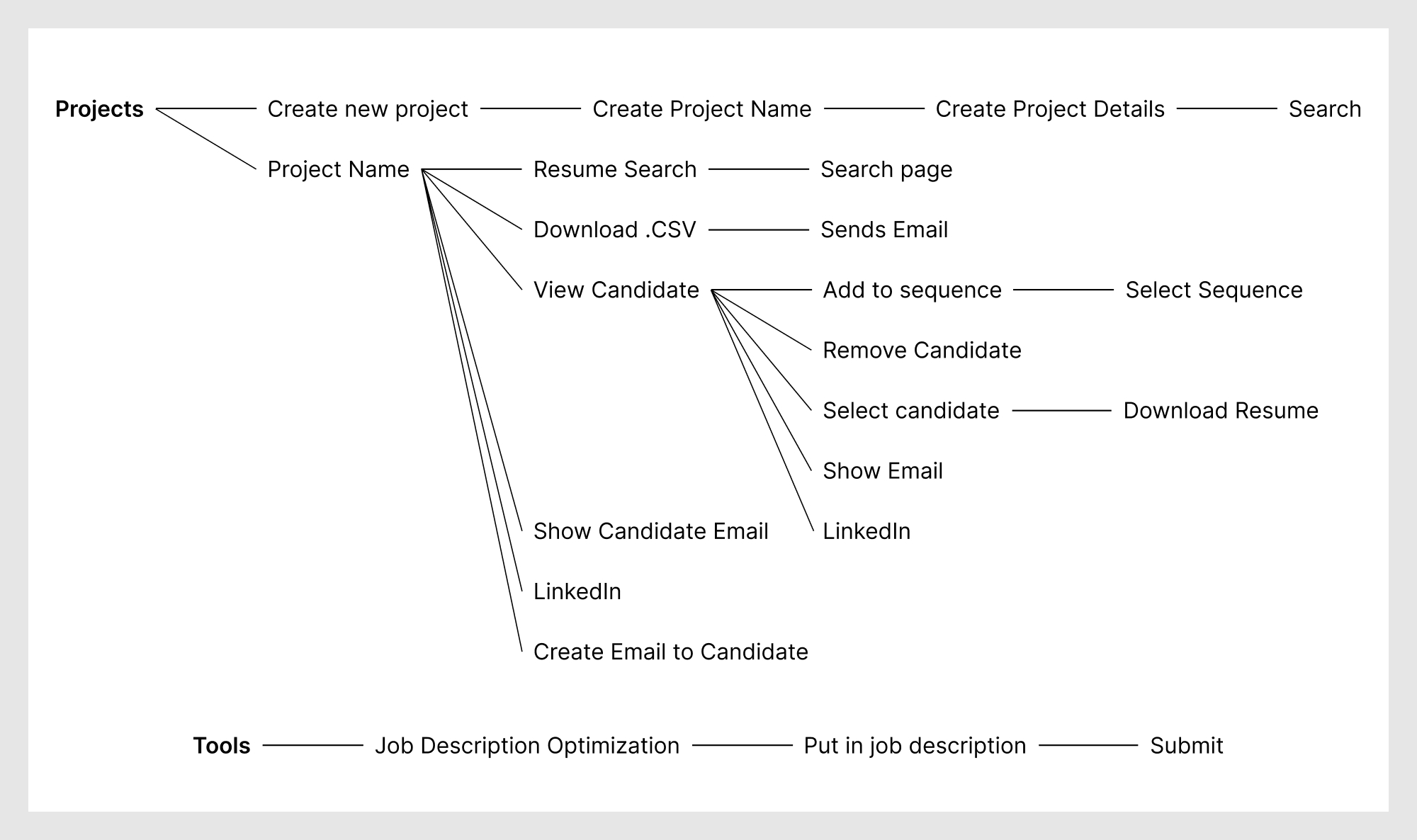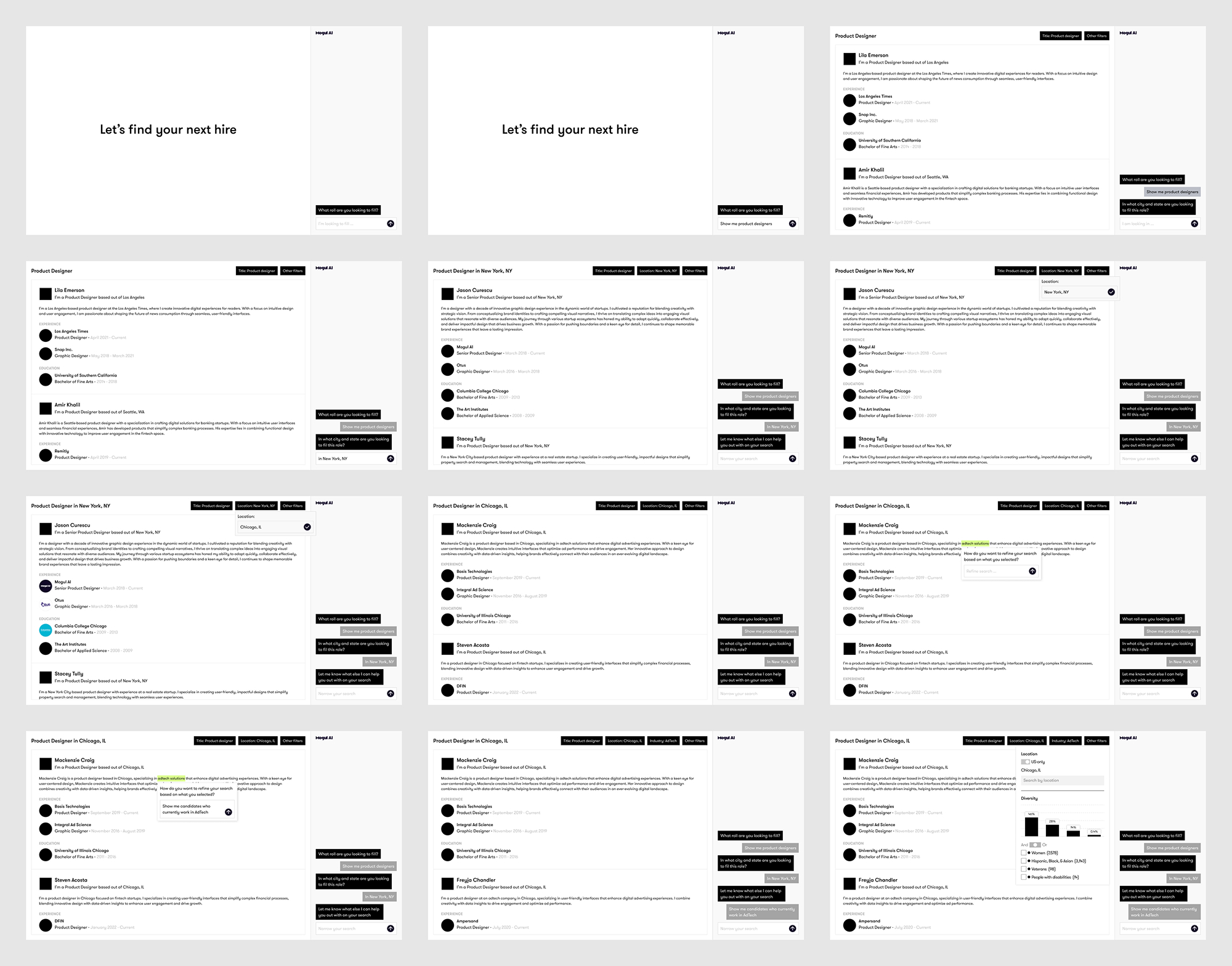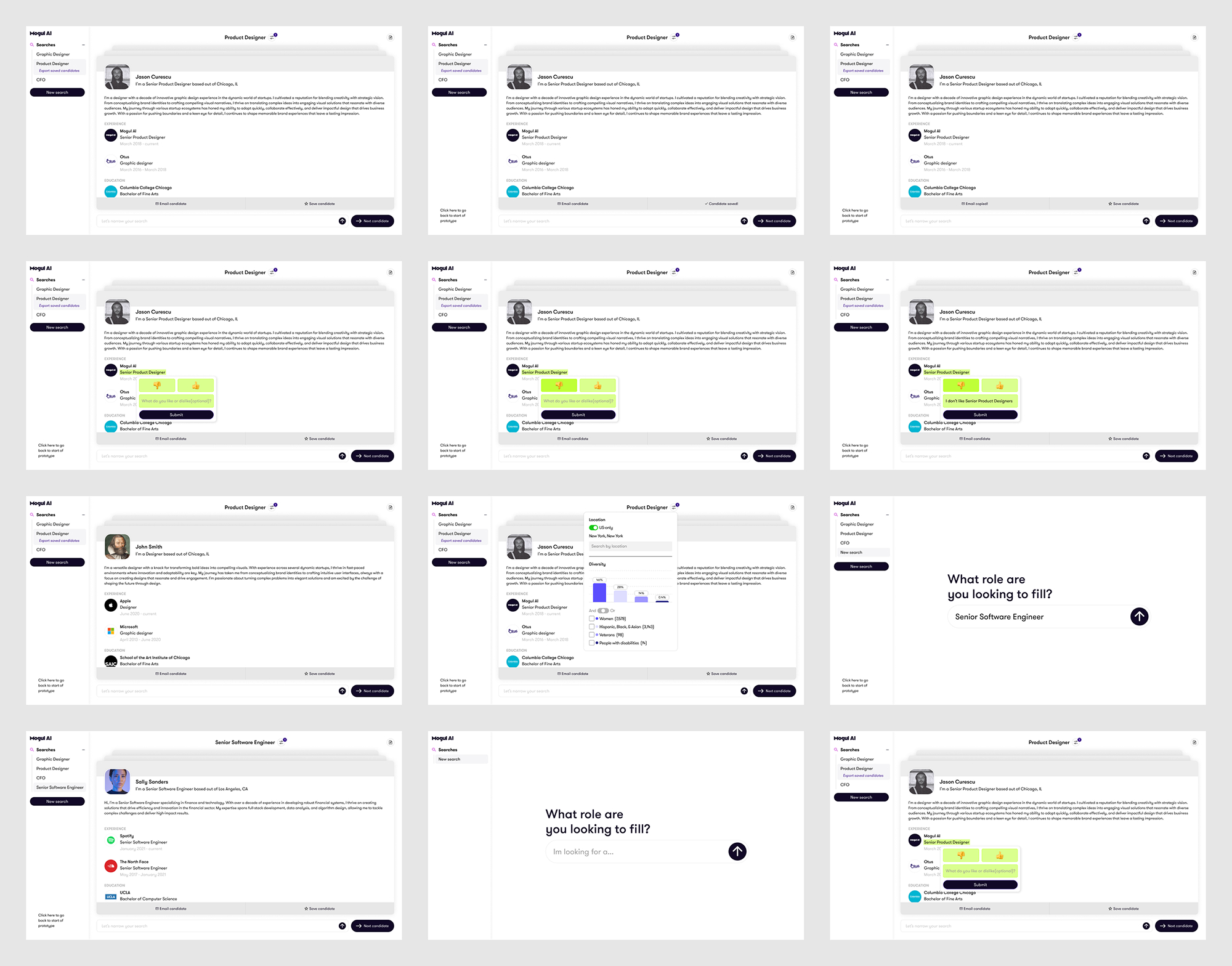Product strategy & leadership
UI/UX design & product development
User research & validation
AI integration & recruitment tools
Branding & marketing
Simplified and more intuitive workflow
Faster, more focused sourcing
Smarter candidate review
Integrated campaign management
Validated by positive feedback
We saw a growing challenge: companies were struggling to find and connect with candidates from underrepresented backgrounds. Since Mogul already had a strong community of diverse professionals, we recognized a real opportunity to bridge that gap. That's how Mogul Recruiter was born. An AI-powered sourcing tool designed to help companies surface talent across key diversity categories like gender, ethnicity, veteran status, and disability.
The redesign centered on one big idea: clarity through structure. I reimagined the experience around a job-centric model where everything (sourcing, candidate review, campaigns, and progress tracking) lives within each job. This shift gave recruiters a single, focused space to get their work done without jumping between disconnected sections. A key part of this was redesigning the menu bar, which had become cluttered and confusing.
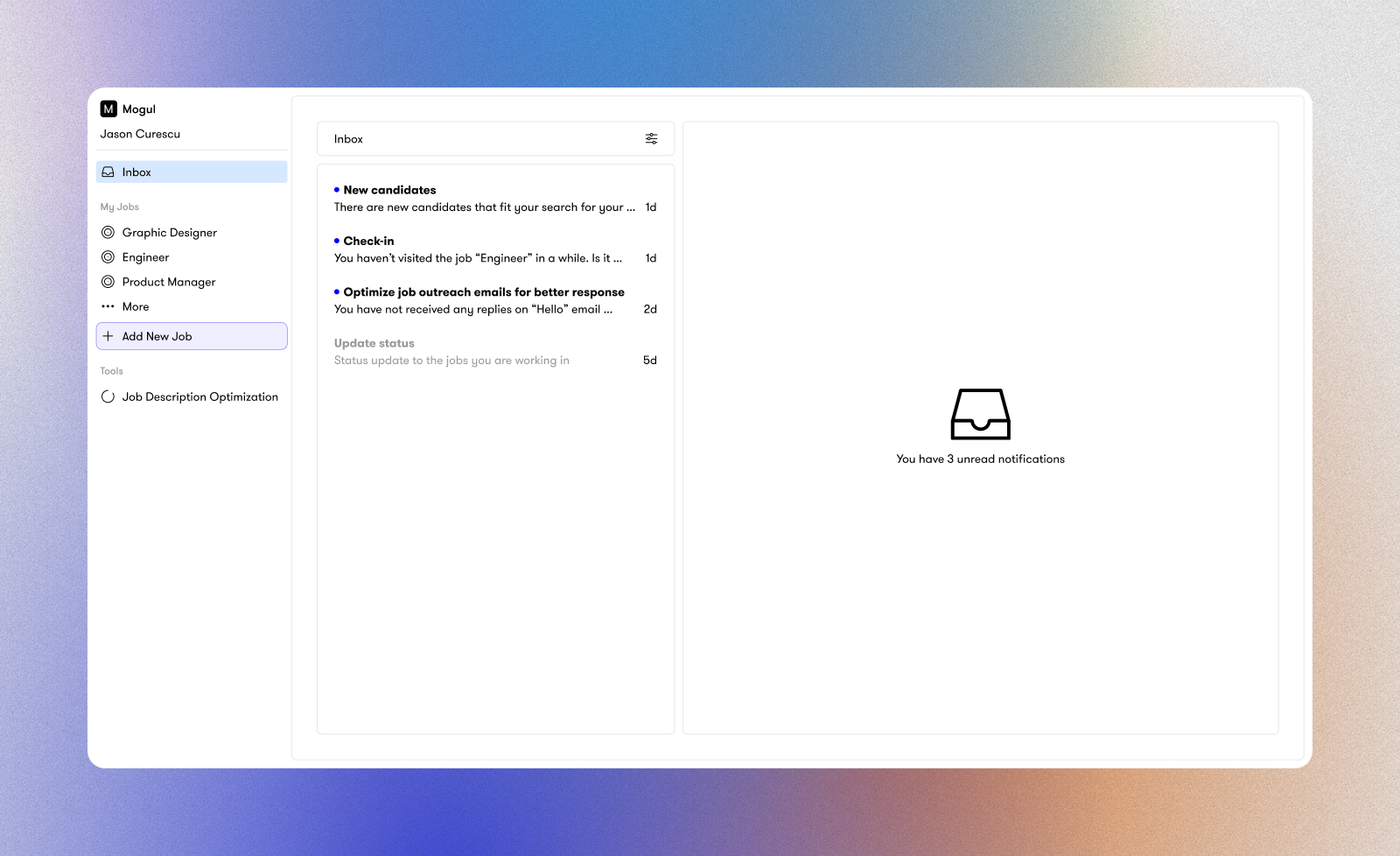
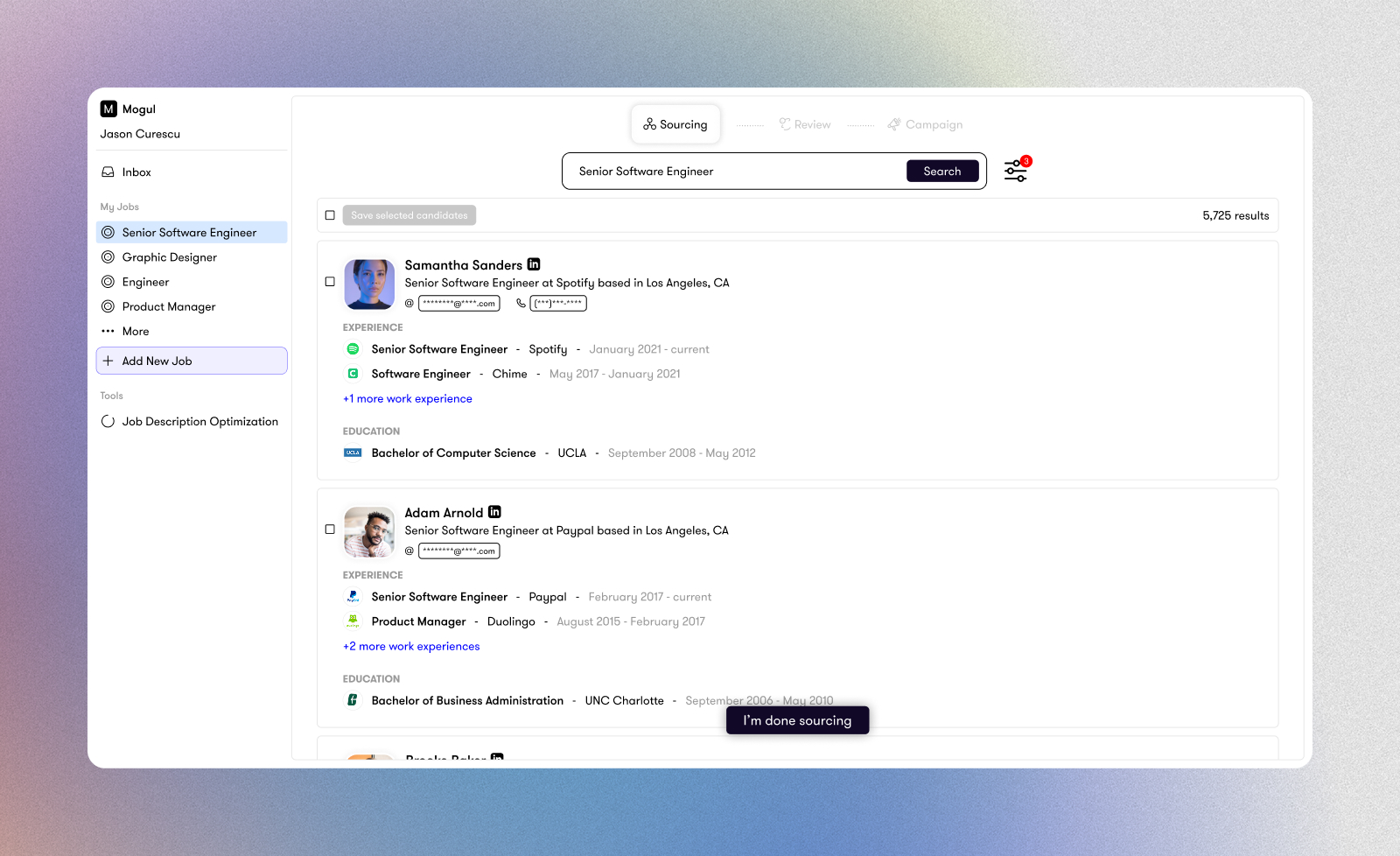
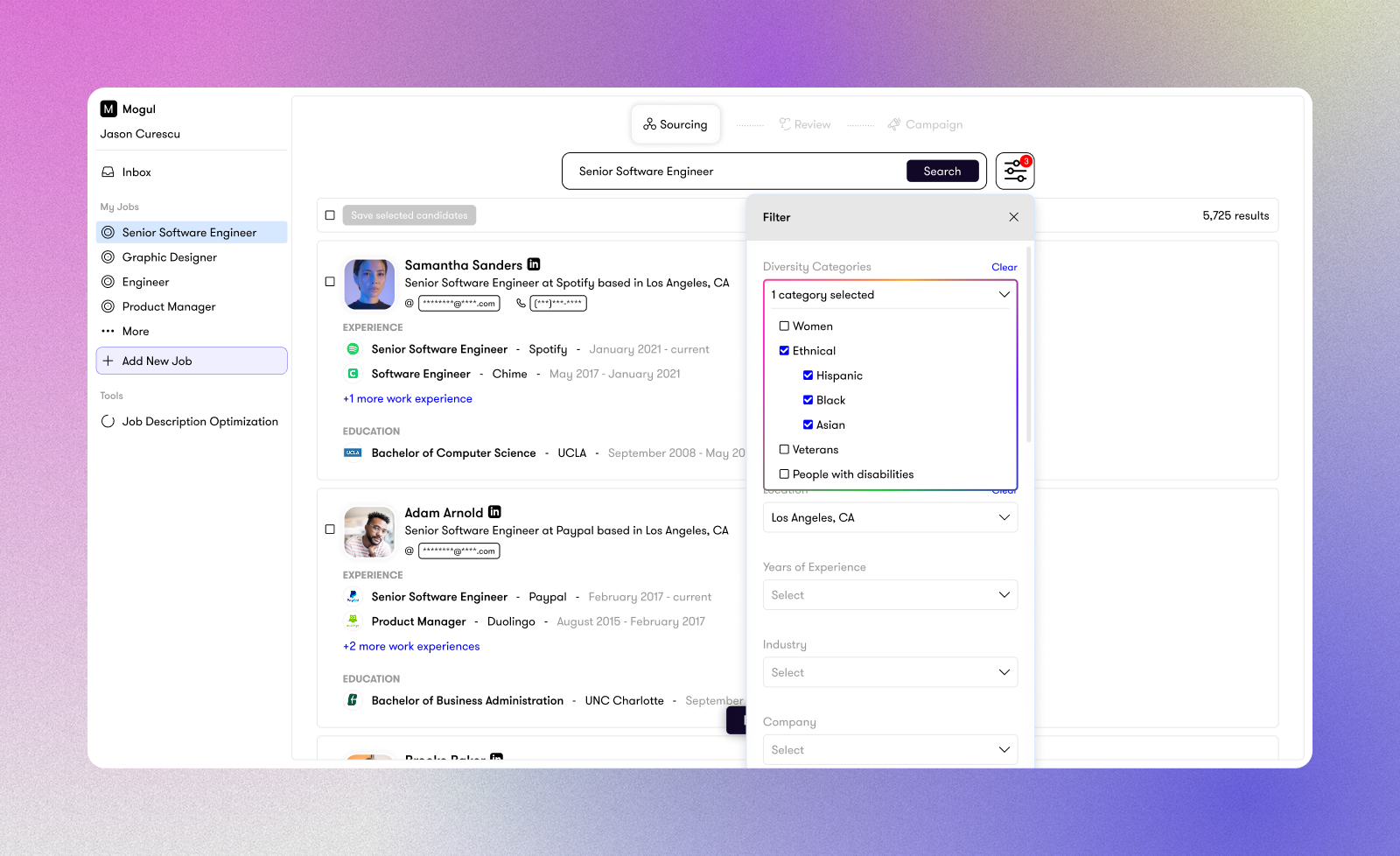
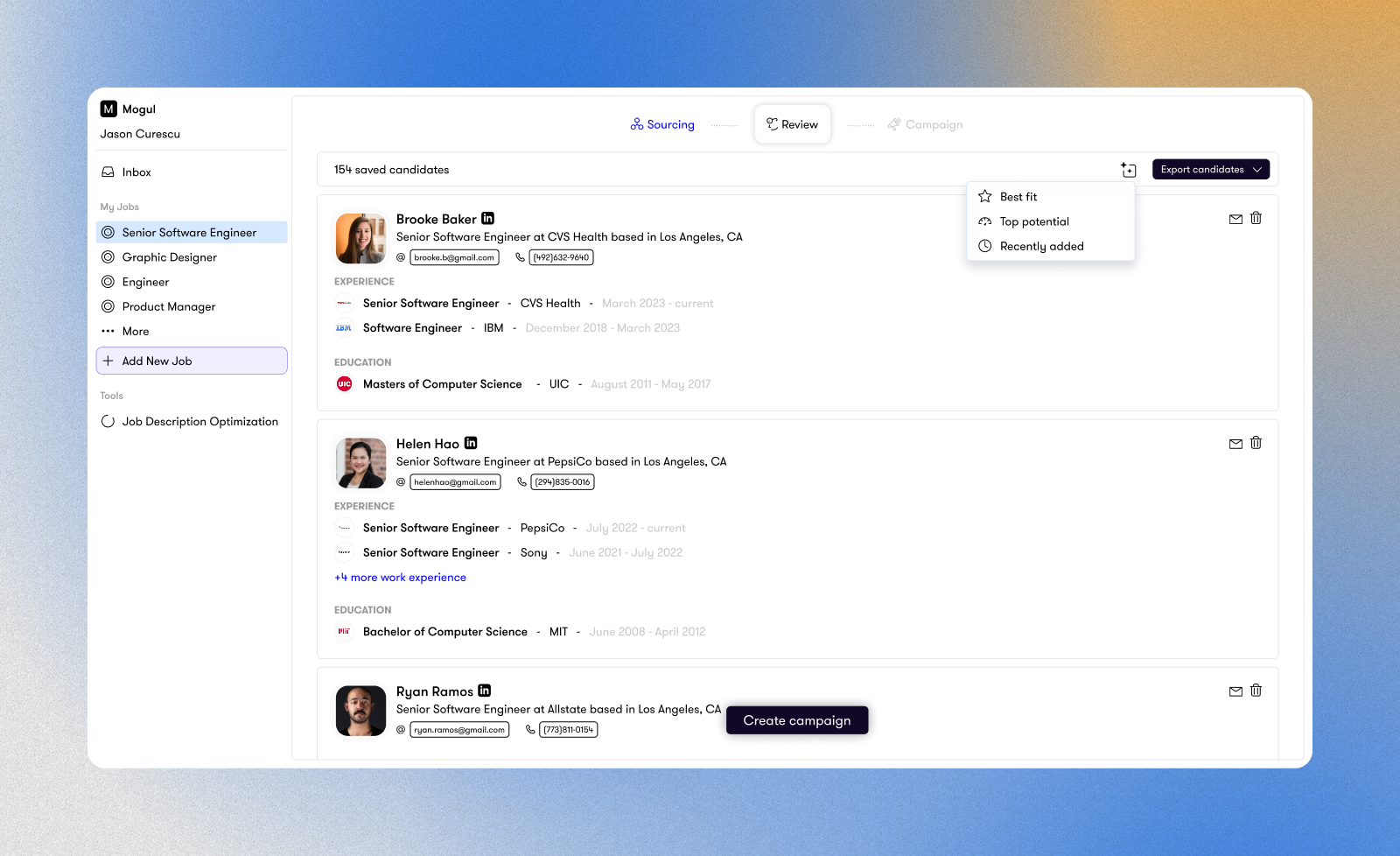


Product strategy & leadership
UI/UX design & product development
User research & validation
Branding & marketing
Over 1 million searches
Curated 1,300+ farms
Enabled farmer participation
Introduced story-driven content
In the beginning of the COVID-19 pandemic when grocery stores were struggling to keep shelves stocked, many people didn't realize that local farms still had plenty of fresh food available. They just didn't have a way to reach consumers directly. At the same time, small farms were losing restaurant and wholesale business and needed new ways to sell their products. Aina was created to close that gap, making it easy for people to discover nearby farms and shop from them directly, without middlemen.
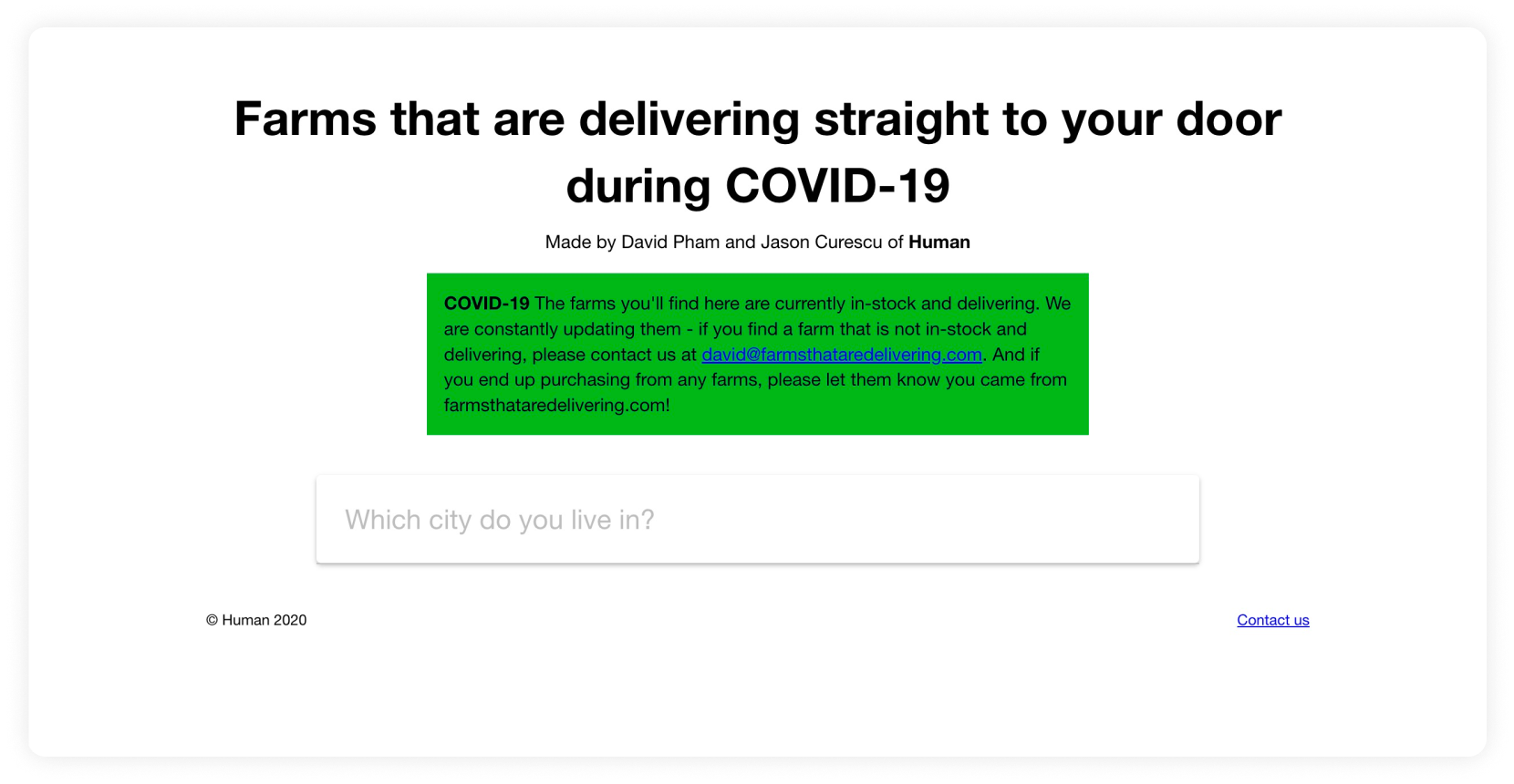
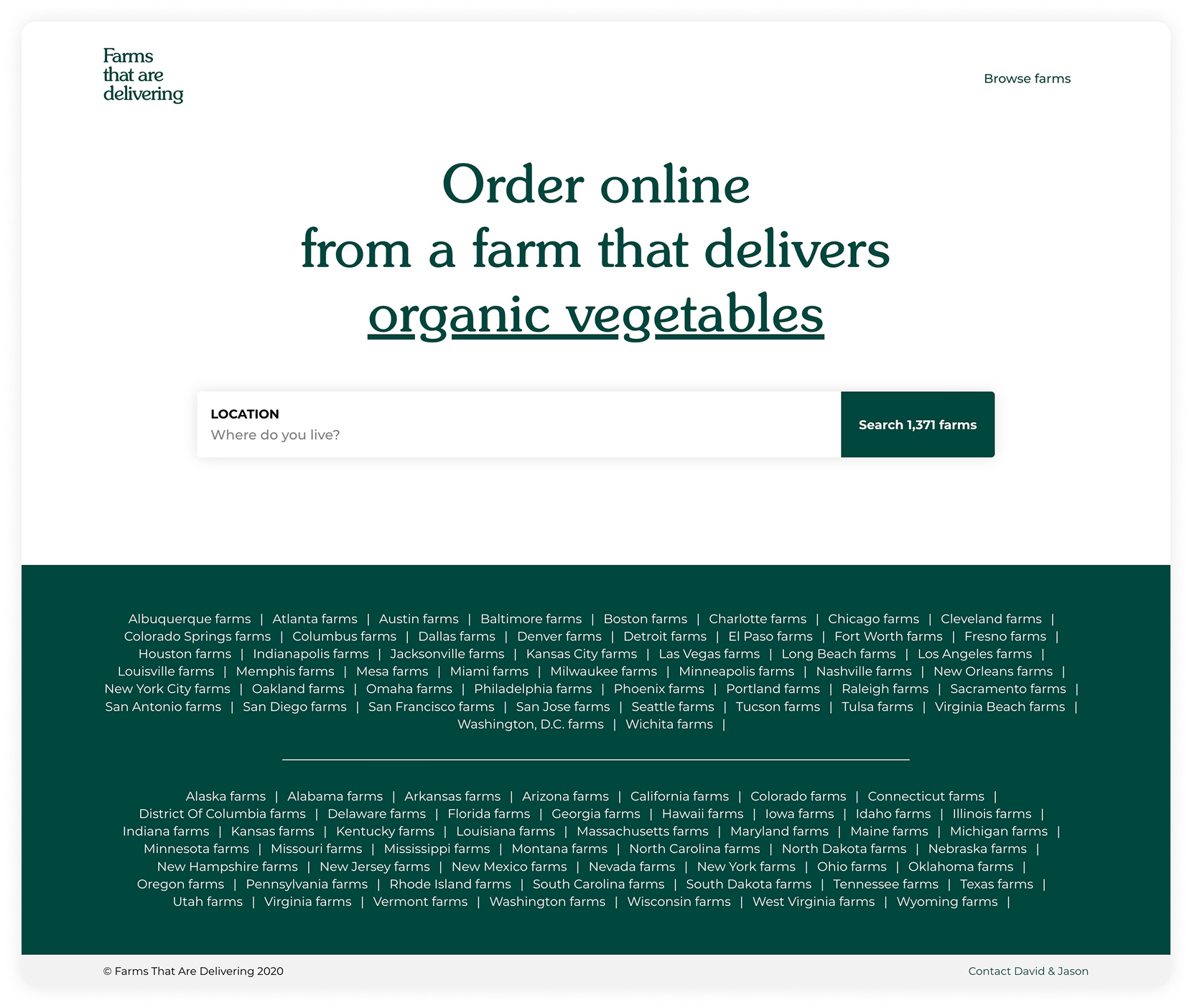
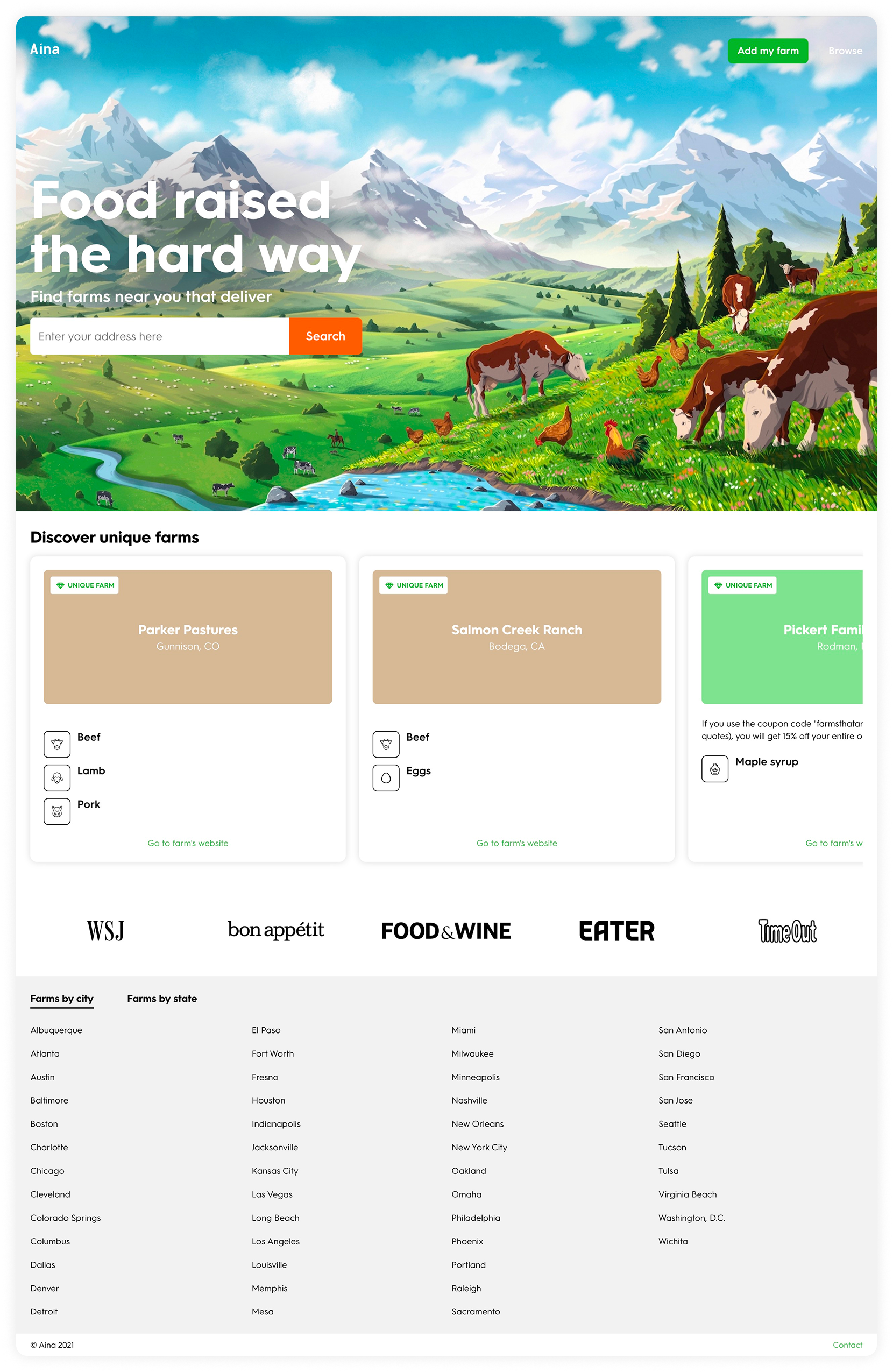
Product strategy & leadership
UI/UX design & product development
User research & validation
AI integration & recruitment tools
Branding & marketing
Clear progress for users
Daily focus with morning and evening ritual
Built-in planning
Stronger community
Users have better direction
Many users in our community had big goals but didn't know how to get started. They felt stuck, overwhelmed, and unsure of what to do first. Without a clear way to break things down or stay organized, it was hard to make progress. The process of setting and managing goals felt confusing, and motivation often dropped off. We saw an opportunity to create a simple tool that could help people turn their ideas into action.
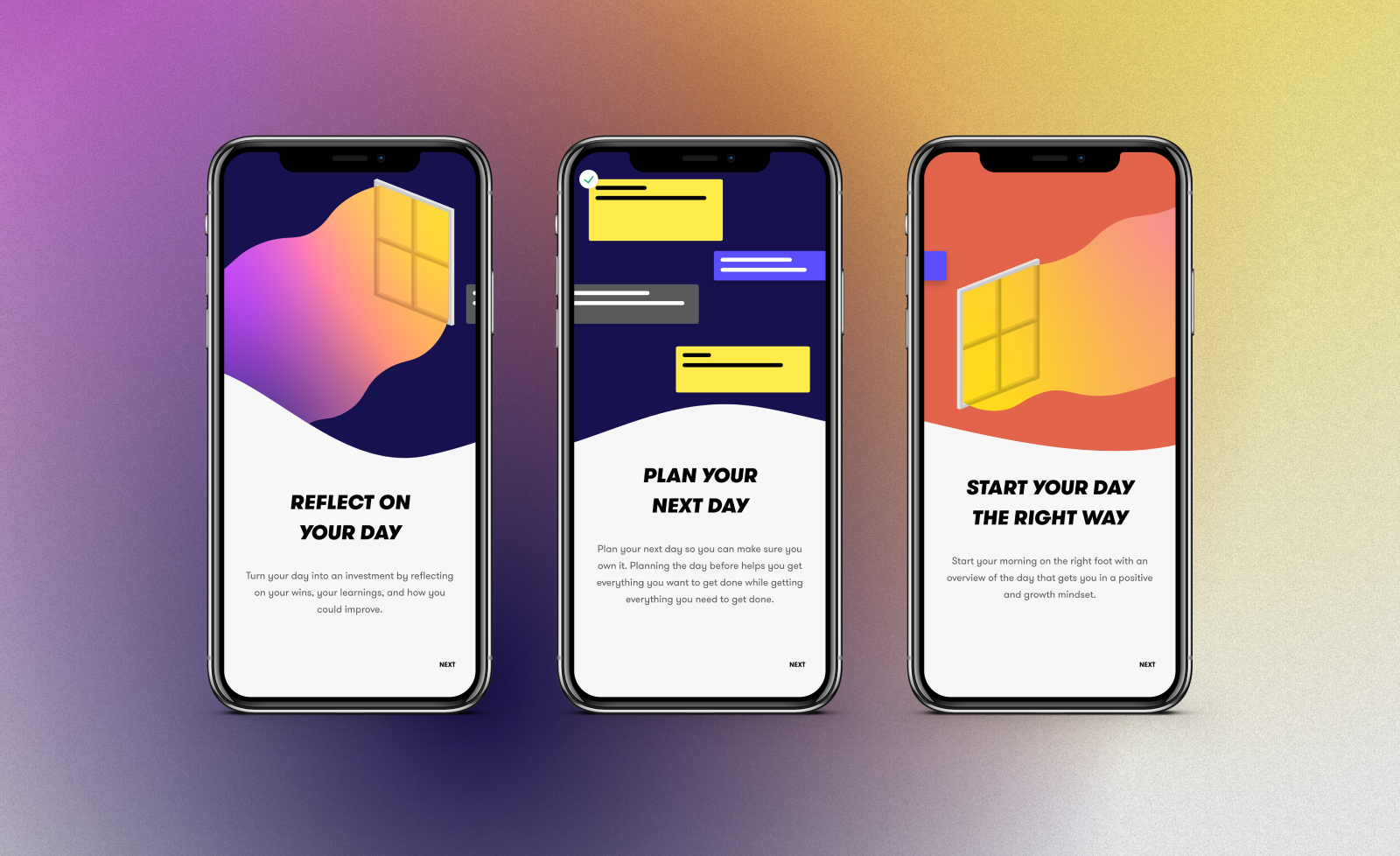

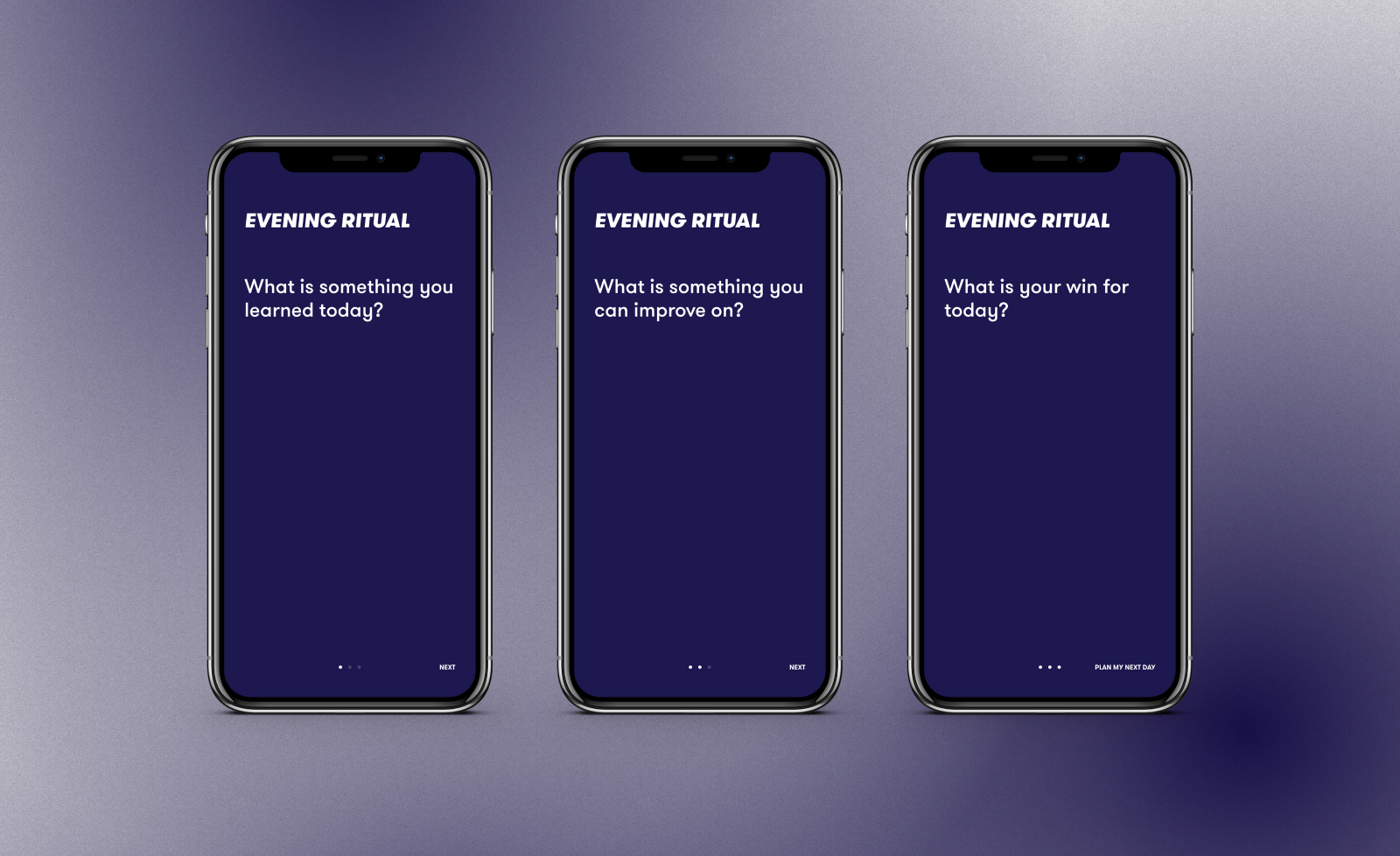


Responsibilities:
Marketing Design & Brand Strategy
Cross-Functional Collaboration
UI/UX Feedback Integration
Motion Graphics & Video Production
Customer Insights & Visual Narratives

Responsibilities:
Print & Digital Design
Product Launch Support
Brand-Aligned Visual Development
Website & Asset Management
Print Production Coordination
